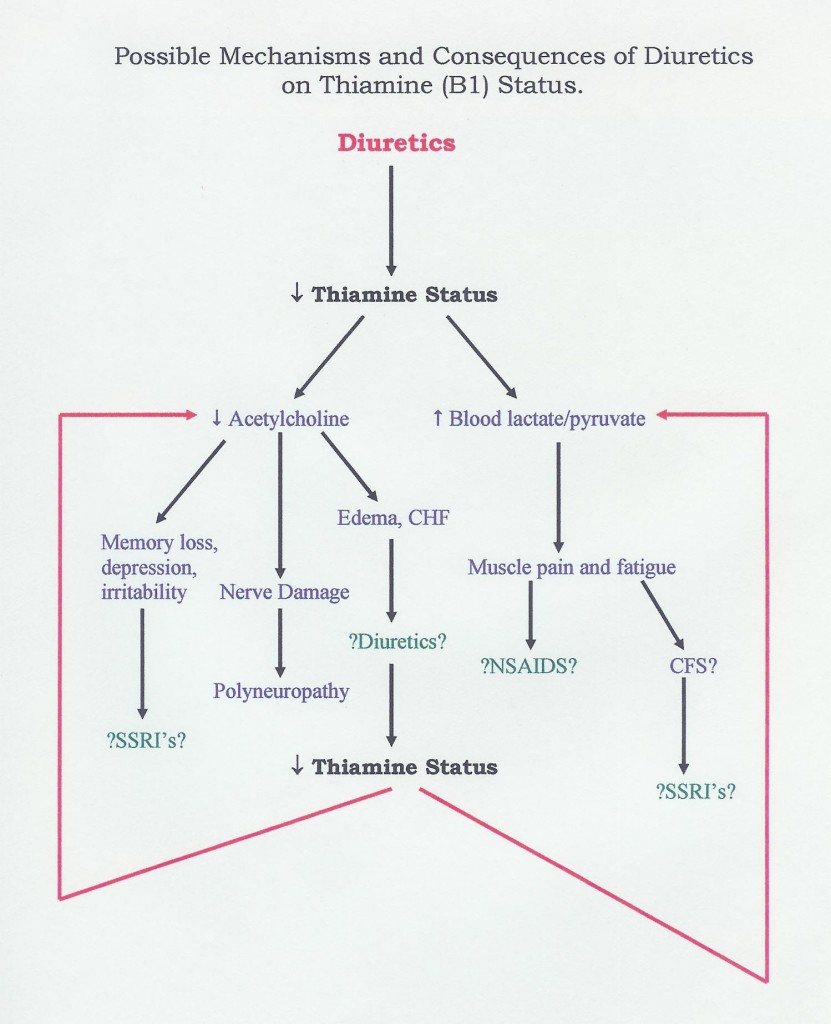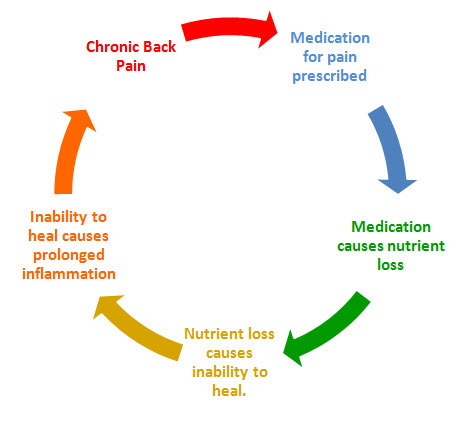Conventional medical treatment for high blood pressure (hypertension) is typically based around prescribing medications. There are a number of different types of medications, but the most commonly used types are diuretics (water pills), and ACE inhibitors.
Blood Pressure Medications induce vitamin and mineral deficiencies…these deficiencies can cause high blood pressure.
The problem with this approach is that it does not address the actually root cause of the elevation in blood pressure. Additionally, long term use of blood pressure medications induce deficiencies of zinc, B-Vitamins, CoQ10, calcium, magnesium, and potassium. Long term presence of these deficiencies can actually cause high blood pressure. Therefore it can be said that the long term medical treatment for high blood pressure actually promotes elevated blood pressure!
Let’s not stop there. Deficiencies of these nutrients can cause other problems as well.
In the diagram below you can see the consequences of blood pressure medication (diuretics) on the B-Vitamin, Thiamine. Take note that one of the diseases induced is congestive heart failure. Are we trying to reduce the risk of heart disease?
Abbreviations:
- SSRI’s = selective serotonin reuptake inhibitors (drugs like prozac, lexapro, paxil, etc)
- NSAIDS = non steroidal anti inflammatory drugs (examples include, Celebrox, Naproxen, and Ibuprofen)
- CFS = chronic fatigue syndrome
- CHF = congestive heart failure
There are multiple components that contribute to hypertension. None of these are deficiencies in medications. So then why do we keep accepting this as a viable long term treatment?
What You Can Do to Reverse and Prevent Blood Pressure Problems:
- Stay active – exercise and activity strengthen the heart muscle and improve circulation efficiency.
- Avoid smoking – enough said on this topic.
- Eat foods rich in potassium, magnesium, and calcium (fresh fruits and vegetables). It has been proven that diets high in these nutrients keep blood pressure normal and help lower blood pressure in the hypertensive.
- See a Board Certified Nutritionist – Often times eating the wrong food is a major culprit in hypertension. Identifying food allergies and intolerance can help the body restore normal balance and function
- Get adequate sleep. Inadequate sleep has been linked to elevations in blood pressure.Maintaining proper rest is a critical element to controlling stress and staying healthy.
- Take time for yourself – Whether it is vacation or just an afternoon away from the fast pace of daily life taking some time off is an effective way to re-energize.
- Have your vitamin D levels checked twice per year – Vitamin D deficiency is an epidemic in the United States. Lack of this nutrient has been shown to cause high blood pressure and contribute to diabetes.
- Go see a chiropractor – regular chiropractic adjustments help your nervous system communicate with your heart and blood vessels. New research has shown that chiropractic adjustments can lower blood pressure by as much as 17 points. Watch the videos below:











